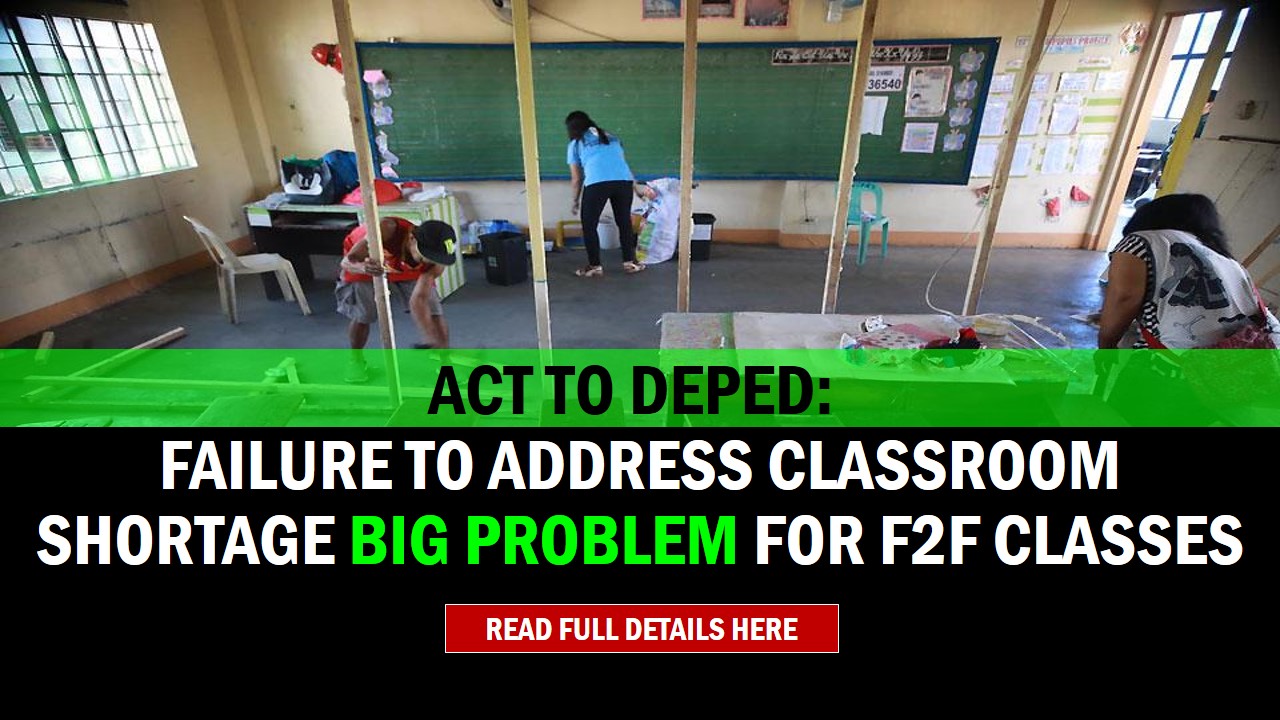
THE ALLIANCE OF CONCERNED TEACHERS stated that the Department of Education’s poor track record in classroom construction makes it extremely difficult for teachers and other education stakeholders to prepare for the safe resumption of face-to-face classes.
Raymond Basilio, the group’s secretary general, said, “Matindi na ang kakulangan ng klasrum bago pa magpandemya. Wala namang ginawa ang DepEd para habulin ang konstruksyon sa dalawang taon na sarado ang mga paaralan. Lumala pa ang kalagayan nang masira ang mga klasrum sa mga bagyo at lindol. Hanggang ngayon, nakatiwangwang pa ang mga tinamaan ng kalamidad.”
According to Basilio, ACT’s ground monitoring revealed several calamity-stricken classrooms in Bicol provinces, Ilocos, Cordillera, Lapu Lapu City, Mandaue City, Cebu City, Cebu Province, Naga City, Danao City, Bogo City, Bohol, Tagbilaran City, Surigao del Norte, Siargao, and Dinagat Islands.
Classrooms are likewise few in the National Capital Region and Panay, according to school divisions. They also stated that they anticipate class sizes of 60 to 70 people.
“We need to resume face-to-face classes at the soonest possible time to address learning loss and learners are very much eager to go back to school. We have to ensure a manageable class size of 35 learners or less to safeguard health and improve education quality. However, it seems that it is the government who is not earnest in this endeavor as it is obviously not doing its job,” Basilio stated.
According to DepEd data, only 31, 907 of the 108,436 target classrooms were built in 2021, resulting in a 29 percent completion rate.
In 2018, the organization was only able to build 608 classrooms, or 2% of its aim of 28,000 classrooms.
Furthermore, Basillo said, “With the government’s failure to decisively address this problem, the burden now lies upon the teachers and students. Our teachers and parents are forced to work double time in Brigada Eskwela to repair anything that is repairable in the classrooms that were neglected for two years. They have no more rest and often have to shell out money to make the classrooms usable.”
“Two weeks before class opening and schools could still not figure out how classes will be conducted come August 22. Their only options are to jampack classes with huge numbers of learners which is not conducive to health and learning quality, enforce class shifts, hold classes under trees and makeshift learning spaces, or employ distance learning modalities—all of which are not the ideal set-up especially if we want education to recover from the crisis,” he stated.
